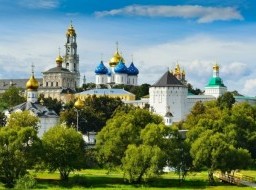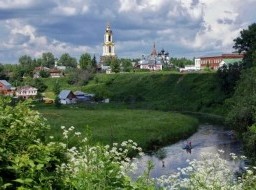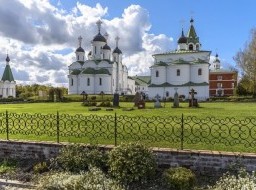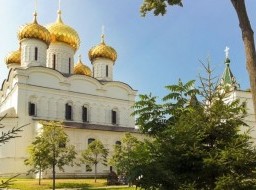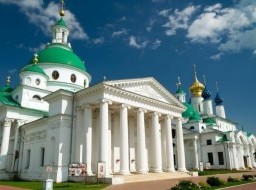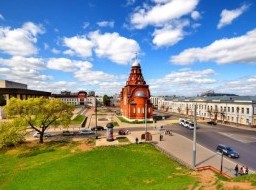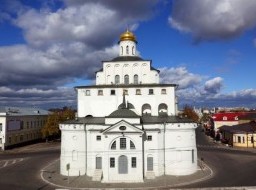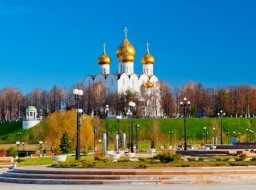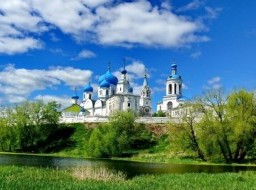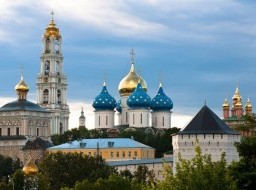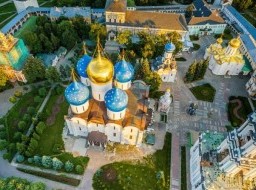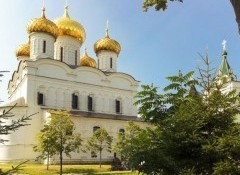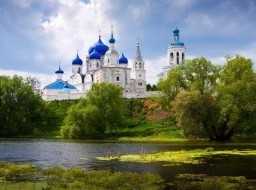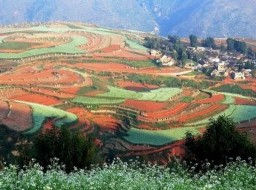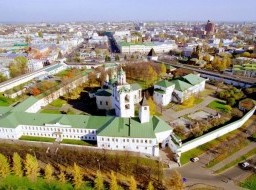Yaroslavl
Yaroslavl makes a lasting impression on people from all parts of the world. Yaroslavl is possibly one of the most ancient settlements of Russians on the Volga River. An ancient legend says that construction began on the city's fortress on the site where Yaroslav the Wise slew a bear. The fortress quickly became a vibrant city on the crossroads of trade routes. Today, Yaroslavl is one of the most popular tourist destinations, and the unofficial capital of the Golden Ring. The historic center of Yaroslavl is on the UNESCO World Heritage List. One of the oldest cities in Russia, Yaroslavl has recently celebrated its millennium. It is named in honor of the Grand Duke Yaroslav the Wise. The village on the site where Yaroslavl was founded was called Medvezhiy Ugol. Local residents did not want to obey Yaroslav and let a bear loose on him. According to the legend, the duke killed the beast with an axe, and since then, a bear with an axe has been featured on the emblem of the city. Preceded by Viking sites the city of Yaroslavl is said to have been founded in 1010 as an outpost of the Principality of Rostov Veliky, and was first mentioned in 1071. Capital of an independent Principality of Yaroslavl from 1218, it was incorporated into the Grand Duchy of Moscow in 1463. In the 17th century, it was Russia's second largest city, and for a time (during the Polish occupation of Moscow in 1612), the country's de facto capital. In the 17th century, it was considered the second city of the country after Moscow in terms of population and also its craft center. Yaroslavl is situated on the north-eastern side of Golden Ring and is the largest city in its chain. Whilst the city is best known for its architectural merits, it also has a relatively large repertoire of cultural attractions. The city of Yaroslavl has managed to retain a great deal of its 17th, 18th and 19th century urban substance. This has helped make the city recognizable as a monument to the architectural development and style of the Russian Tsardom. The center of the city, which covers an area of around 600 hectares, has around 140 individual federally-protected architectural monuments. Since 2005, this ensemble, along with the Spaso-Preobrazhensky Monastery has been included on the list of UNESCO World Heritage Sites. Despite all this, there are a number of buildings of architectural merit which are located outside of the city center. Yaroslavl is a city and the administrative center of Yaroslavl Oblast, Russia, located 250 kilometers (160 mi) northeast of Moscow. The historic part of the city, a World Heritage Site, is located at the confluence of the Volga and the Kotorosl Rivers. It is one of the Golden Ring cities, a group of historic cities northeast of Moscow that has played an important role in Russian history. The city lies in the eastern portion of Yaroslavl Oblast. The historic center of Yaroslavl lies to the north of the mouth of the Kotorosl River on the right bank of the larger Volga River. The city's entire urban area includes a number of territories south of the Kotorosl and on the left bank of the Volga. With over 600,000 residents, Yaroslavl is, by population, the largest town on the Volga until it reaches Nizhny Novgorod. It is a large transport node, and a great number of important national and regional roads, railways, and waterways pass through the city. Yaroslavl and its respective oblast are located in the central area of the East European Plain, which in areas to the northeast of Moscow is characterized by rolling hills and a generally uneven landscape. Typical for this region, the area in and around Yaroslavl is rich in mixed and coniferous forests. In addition to these, there are also large areas of swampland. It is very interesting to visit the Church of the Epiphany, Church of St. Nicholas the Wet, five well-preserved monasteries and the oldest theater in Russia, built in 1750 and named after Fyodor Volkov. |

